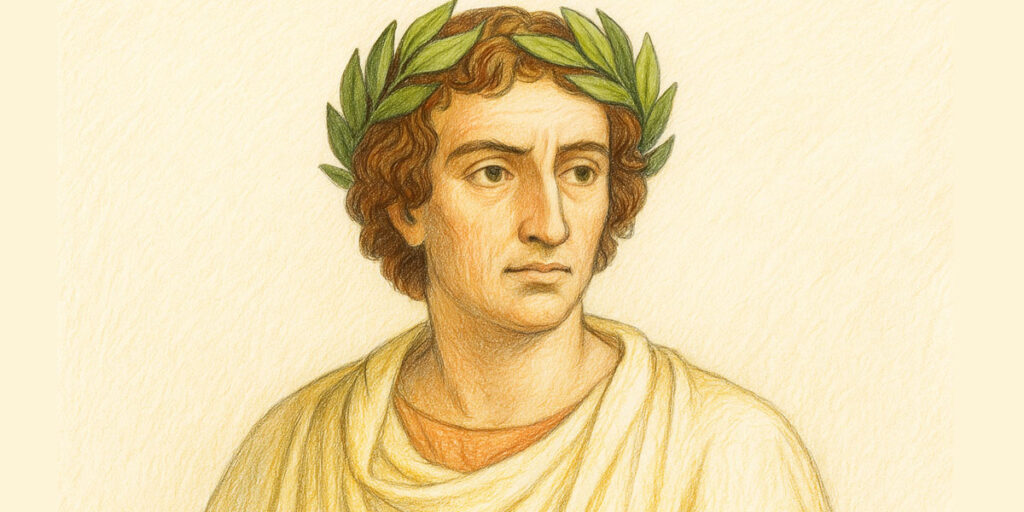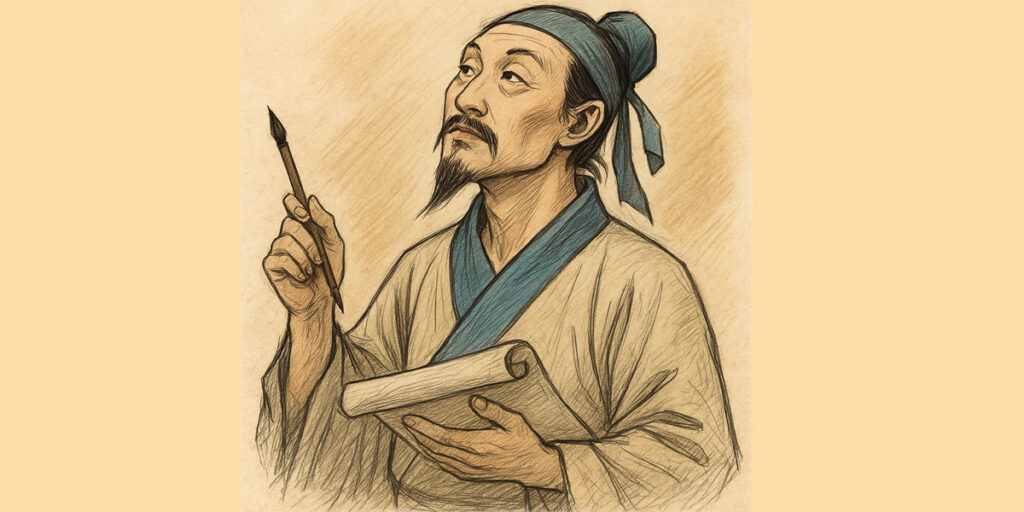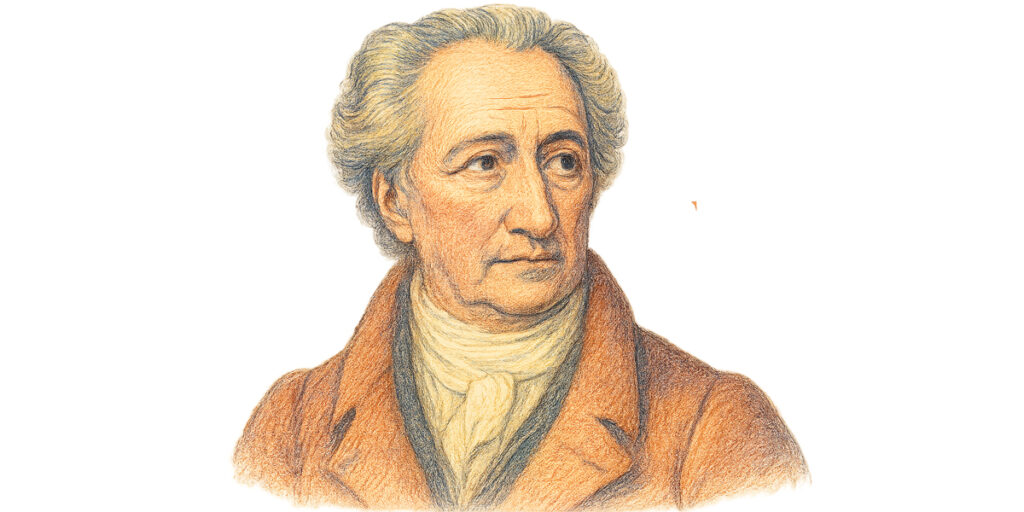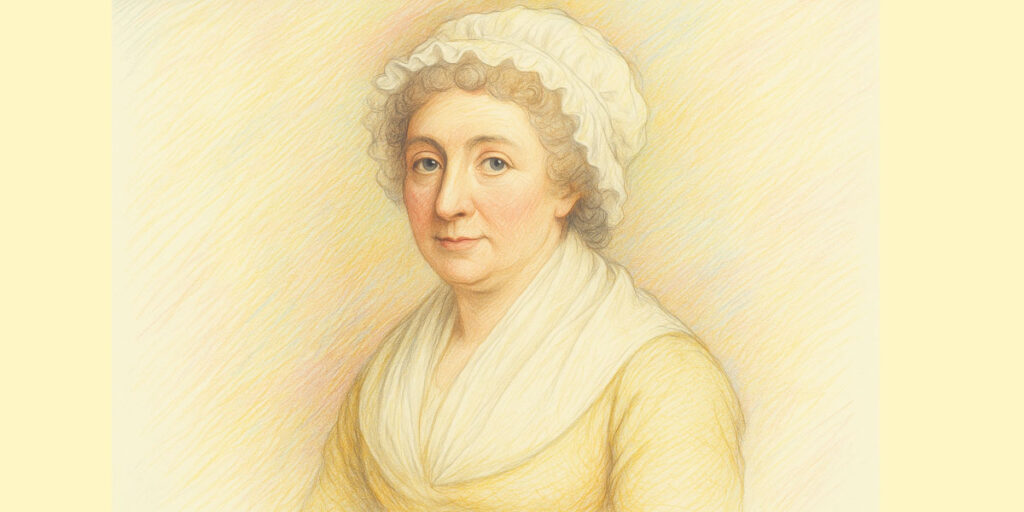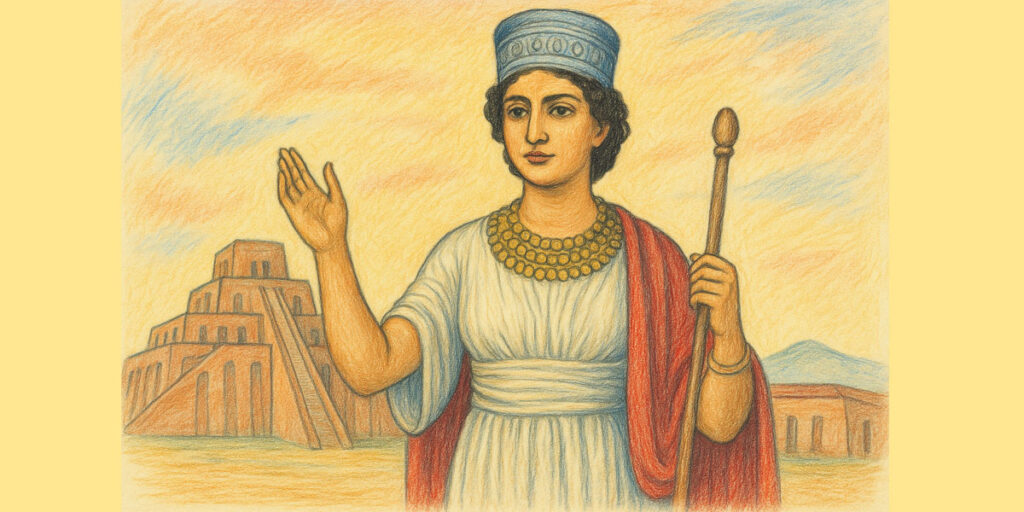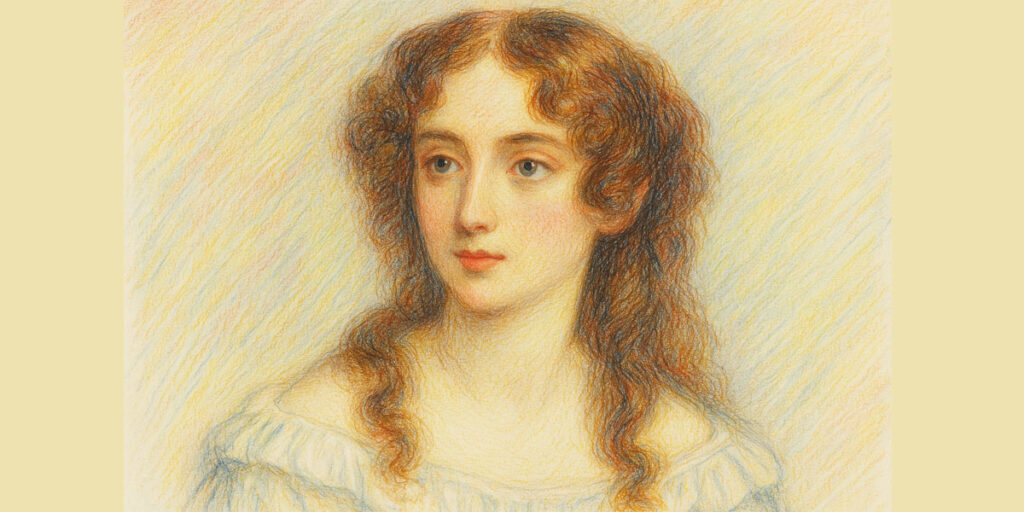Publius Vergilius Maro (Virgil): A Life in Verse and Legacy
Publius Vergilius Maro, known to posterity as Virgil, stands as one of the most illustrious poets of ancient Rome. Born in 70 BCE in the Italian countryside and passing in 19 BCE near Brundisium, his works—the Eclogues, the Georgics, and the epic Aeneid—profoundly shaped Roman cultural identity and Western literature for millennia. This biography traces Virgil’s life from his rural origins, through formative studies and early poetic experiments, to his maturation under patronage, culminating in the unfinished yet monumental Aeneid. In exploring his themes—pastoral nostalgia, rural labor, and Rome’s imperial destiny—we see how Virgil wove personal experience, Augustan politics, and classical traditions into verse that continues to resonate.
I. Early Life and Family Background
Virgil was born on October 15, 70 BCE, in a modest farmstead at Andes, near Mantua in Cisalpine Gaul. His family belonged to the equestrian order, moderately affluent but not aristocratic. Virgil’s father administered the small estate, cultivating cereals, olives, and vines—an upbringing that instilled in the future poet an intimate knowledge of rural life and the rhythms of nature. Virgil’s mother, whose name is not recorded, likely oversaw the household. Cisalpine Gaul in Virgil’s youth was undergoing Roman colonization and land redistribution, events that later influenced his sympathetic portrayal of displaced farmers in the Georgics.
Though his provincial upbringing might have distanced him from Rome’s political center, it provided fertile soil for his pastoral imagination. The landscape of the Po Valley—its rivers, meadows, and rustic communities—became the poetic backdrop for his earliest compositions. Moreover, the tension between native traditions and Roman administrative control may have informed Virgil’s nuanced approach to progress and preservation, a recurring motif in his work.
II. Education in Cremona, Milan, and Rome
At the age of nine, Virgil was sent to Cremona and subsequently Milan for basic schooling in grammar and rhetoric, a typical trajectory for a young Roman of his standing. These towns offered instruction in Latin literature and the rudiments of oratory. By around 50 BCE, Virgil moved to Rome to pursue higher studies. There he encountered the works of Homer, Ennius, and other epic poets; the philosophical doctrines of the Epicureans and Stoics; and the mathematical treatises of Archimedes.
In Rome, Virgil likely audited lectures by the rhetorician Varius Rufus and the Epicurean philosopher Siro, both of whom left a strong imprint on his stylistic polish and thematic preferences. Through exposure to Greek language and literature, he absorbed the pastoral tradition of Theocritus and the epic grandeur of Homer—elements that he would later fuse into a distinctly Roman poetics. Rome’s intellectual ferment at the close of the Republic, marked by civil strife and cultural revival, also sharpened Virgil’s awareness of literature’s role in shaping public virtue.
III. The Eclogues: Pastoral Beginnings
Around 42 BCE, Virgil wrote a series of ten pastoral poems collectively known as the Eclogues (or Bucolics). These short dialogues and monologues, composed in dactylic hexameter, depict shepherds conversing on love, prophecy, and the vicissitudes of country life. Though set in an idealized landscape, the poems subtly allude to the harsh realities of post-Caesar civil wars and land confiscations in northern Italy.
The Eclogues showcase Virgil’s mastery of pastoral conventions—longed-for simplicity, musical language, and mythic imagery—while emerging as political allegory. In the famous Fourth Eclogue, a virgin birth heralds a new golden age, a passage later seized upon by Christian interpreters as prophetic of Christ. Through the Eclogues, Virgil earned the patronage of the wealthy Roman aristocrat Gaius Asinius Pollio and established his reputation as a poet capable of blending artistry with contemporary concerns.
IV. Personal Associations and Patronage
After the Eclogues, Virgil formed connections with prominent figures of the Augustan court. In 39 BCE, he became part of the circle around Maecenas, Emperor Augustus’s trusted adviser and cultural patron. Maecenas provided financial support and social introductions, enabling Virgil to devote himself wholly to writing. Under Maecenas’s aegis, Virgil resided in Rome, where he refined his craft alongside other poets such as Horace and Varius Rufus.
Maecenas’s patronage not only freed Virgil from the necessity of teaching or law but also guided him toward themes that aligned with Augustan ideology: agricultural revival, social harmony, and imperial destiny. Through letters and gatherings at the poet’s villa—likely on the outskirts of Naples—Virgil shared drafts and received critiques in a collegial atmosphere, accelerating the growth of his poetic vision.
V. The Georgics: Hymn to Agricultural Renewal
Between 37 and 30 BCE, Virgil composed the Georgics, a four-book poem celebrating the art of farming. Drawing on Hesiod’s Works and Days and Lucretius’s didactic models, he crafted a Roman manual of agronomy, interweaving practical advice with mythological episodes and moral reflections. Book I addresses plowing and tree cultivation; Book II, vineyards and olive trees; Book III, livestock husbandry; Book IV, bees—an emblem of communal industry.
Yet the Georgics transcend mere utilitarianism. Through vivid ekphrases, personifications, and pastoral similes, Virgil elevates labor to a sacred duty, aligning it with the Augustan project of restoring Italy’s war-ravaged fields. The poem mourns natural disasters and human neglect while exalting resilience and piety toward the gods. Virgil’s nuanced portrayal of rural hardship—locust plagues, floods, animal diseases—imbues the text with emotional depth. As a mirror of Augustus’s own land reforms, the Georgics bolstered Virgil’s standing as Rome’s transformative poet.
VI. Themes and Innovations in the Georgics
Virgil’s Georgics innovate by fusing didactic content with lyric fervor. His hexameter is enriched by enjambments and poetic digressions, creating a dynamic rhythm that animates technical instruction. He introduces allegorical figures such as “Honour” and “Labour,” and his portrayal of the bee colony in Book IV stands as one of Latin literature’s earliest and most sophisticated ecologies.
Moreover, the Georgics grapple with cosmic order and human agency: labor becomes an act of collaboration with divine forces. Virgil’s invocation of Italian deities—Ceres, Jupiter, and Apollo—reinforces a pantheistic vision in which land cultivation is inseparable from religious devotion. This synthesis of practicality and spirituality would influence agricultural treatises and moral poetry well into the Renaissance.
VII. The Ambition of the Aeneid
After the success of the Georgics, Virgil turned to his magnum opus, the Aeneid. Commissioned—whether explicitly or through imperial expectation—by Augustus himself, the epic was intended to legitimize the emperor’s rule by tracing Rome’s origins to the Trojan hero Aeneas. Beginning around 29 BCE and continuing until Virgil’s death in 19 BCE, the Aeneid spans twelve books, mirroring Homer’s Iliad and Odyssey.
The first six books chronicle Aeneas’s wanderings from Troy to Italy, paralleling Odysseus’s homecoming, while the latter half depicts Aeneas’s wars and alliances in Latium, akin to Homeric battlefield narratives. Through evocative similes and elaborate speeches, Virgil elevates Aeneas as “pious”—a model of duty to gods, family, and nation. The epic interlaces personal pathos with national myth, as characters negotiate love (Dido), fate, and pietas. This fusion of epic grandeur with psychological insight marks a new epoch in Roman literature.
VIII. Composition and Structure of the Aeneid
Virgil’s meticulous drafting of the Aeneid involved frequent revisions. Early drafts employed archaic Latin archaisms, while later versions favored clarity and tonal variety. Virgil experimented with intertextual echoes—Homeric leitmotifs reworked in a Roman idiom. The poem’s hexameter is flexible, capable of martial invocations in Book VII and tender laments in Book IV.
His structural innovation lies in thematic symmetry: Book VI’s descent into the underworld serves as the epic’s moral and spiritual axis, foreshadowing Aeneas’s destiny. The final duel between Aeneas and Turnus poses ethical dilemmas about mercy and vengeance. Virgil’s choice to end on an ambiguous note—Aeneas slays Turnus despite the latter’s plea—leaves readers pondering the cost of empire and the ambiguity of heroism.
IX. Relationship with Augustus and Public Reception
Though Virgil never dedicated the Aeneid directly to Augustus, his alignment with Augustan ideals is unmistakable. Augustus’s restoration of temples, establishment of the Pax Romana, and promotion of religious observance resonated with Virgil’s themes of renewal. Reports suggest that Augustus admired the poem, even overseeing its completion.
After Virgil’s death, however, public readings of the Aeneid circulated in various stages of editing. Emperor Augustus, following Virgil’s request, resisted burning the unfinished portions, ensuring the poem’s preservation. As Rome entered the imperial era, Virgilian verses adorned monuments and civic ceremonies, affirming the empire’s mythical origins. The Aeneid rapidly became a school text for Roman youth, instilling language skills and patriotic fervor.
X. The Final Years and Death
By 19 BCE, Virgil had completed many sections of the Aeneid but continued refining details. That summer, he embarked on a journey to Greece, possibly to oversee Homer’s Treasury’s restoration or consult libraries for textual comparisons. On his return voyage to Italy, he fell ill, reportedly of a fever. He disembarked at Brundisium, where he died on September 21, 19 BCE.
Virgil’s final instructions—delivered to Augustus by his friend Varius Rufus—were to destroy the remaining drafts of the Aeneid. Augustus overruled this, instructing, “Let them be published in whatever condition they are.” This act preserved the epic for posterity, and within decades, scribes produced annotated editions, disseminating Virgil’s verses throughout the Roman world.
XI. Virgil’s Poetic Style and Philosophical Underpinnings
Virgil’s style is celebrated for its harmonious blend of formality and emotion. His hexameters are balanced yet fluid, capable of conveying the grandeur of epic battle and the intimacy of personal reflection. He draws on Greek rhetorical devices—ekphrasis, chiasmus, ring composition—while advancing Latin’s expressive potential.
Philosophically, Virgil absorbed Epicurean interests in the material world (notably in the Georgics) yet also exhibits Stoic reverence for cosmic order and duty. His religious sensibility—a blend of traditional Roman piety and poetic homage to nature’s divinity—prefigures Renaissance humanism’s fusion of classical and spiritual elements.
XII. Legacy and Influence
Virgil’s influence radiated across time and geography. In the late Roman Empire, Christian writers interpreted the Fourth Eclogue as a pagan prophecy of Christ’s birth. During the Middle Ages, Virgil became a mystical guide in Dante’s Divine Comedy, where he represents reason and classical virtue. Renaissance humanists revered him as the “Holy Virgil,” a master of Latin elegance and moral insight.
In the modern era, translations and commentaries proliferated in Europe, shaping national epics and romantic poetry. Poets from Milton to Tennyson acknowledged Virgil’s art, while education systems in Britain, France, and beyond regarded the Aeneid as a linguistic and ethical cornerstone. His depictions of war’s horrors, exile, and the human yearning for home continue to inform contemporary literature and scholarship.
XIII. Conclusion
Publius Vergilius Maro’s life and work encapsulate the transformation of Rome from Republic to Empire. From his humble beginnings in Mantua to the saloons of Augustan Rome, he forged a poetic vision that honored the past, celebrated agrarian values, and articulated imperial destiny. Though he died before polishing his masterpiece to perfection, Virgil’s enduring corpus—the Eclogues, Georgics, and Aeneid—remains a testament to the power of verse to shape collective memory. Two millennia later, readers still journey with Aeneas, find solace in pastoral landscapes, and marvel at the marriage of craft and conviction that defines Virgilian poetry.
• The Eclogues (Bucolics) – Composed around 42 BCE, this collection of ten pastoral poems celebrates shepherds conversing on love, prophecy, and the beauty of the countryside. Through rich imagery and subtle political allusion, the Eclogues established Virgil’s reputation and influenced subsequent pastoral literature.
• The Georgics – Written between 37 and 30 BCE in four books, the Georgics merge practical agricultural instruction with mythological digressions and moral reflection. Addressing topics from plowing and viticulture to animal husbandry and beekeeping, Virgil’s didactic epic praises rural labor as both a civic duty and a sacred act.
• The Aeneid – Virgil’s final and greatest work, begun in 29 BCE and left unfinished at his death in 19 BCE, traces the Trojan hero Aeneas’s journey from the ruins of Troy to the founding of Rome. Spanning twelve books and written in dactylic hexameter, the Aeneid fuses Homeric epic form with Augustan ideology, exploring themes of duty (pietas), destiny, and the costs of empire.
• Minor and Spurious Poems – A handful of shorter works—such as the “Culex” (The Gnat) and various occasional verses—are preserved in the Appendix Vergiliana. While their Virgilian authorship is debated, they reflect the breadth of poetic experimentation circulating under his name in the early Empire.
• Appendix Vergiliana – A later collection of shorter poems traditionally (though spuriously) attributed to Virgil. It includes pieces such as the mythic epyllion Ciris (on Scylla’s transformation), the playful Culex (“The Gnat”), and occasional dirges like the Dirae and Lydia.
• Culex (“The Gnat”) – A brief mythological tale in hexameters recounting how a humble gnat rescues Aeneas from a serpent, only to meet its own tragic end. Though not part of the canonical corpus, it showcases Virgil’s early narrative flair.
• Ciris – A mini-epic exploring the metamorphosis of the nymph Scylla into a ciris (curl of hair), blending elegiac tone with pastoral imagery. Its lush descriptions anticipate the richer ekphrastic passages of his later Georgics and Aeneid.
• Dirae and Lydia – Two elegiac couplets preserved in the Appendix, lamenting lost love and exile. These fragments offer a glimpse into Virgil’s sensitivity to personal emotion and the elegiac tradition of heartbreak.
• Priapea and Catalepton (attributed) – Short, ribald epigrams on the god Priapus and other themes. Modern critics debate their authenticity, but they reflect the breadth of poetic experimentation circulating under Virgil’s name in the early Empire.
• Occasional Epigrams and Epitaphs – Scattered lines quoted by later authors—funerary verses, dedications, and inscriptions—demonstrate Virgil’s role as a cultured poet of public and private ceremonies.
• Lost Drafts and Fragments – References by ancient commentators suggest Virgil also experimented with tragic drama and political odes early in his career. Though these works are lost, surviving marginalia in medieval manuscripts testify to his wide-ranging ambitions before focusing on epic and didactic verse.
• Literary Commentaries and Scholia – While not works by Virgil himself, the extensive body of prose commentaries from antiquity through the Renaissance—scholia on the Aeneid and Georgics—attest to his enduring influence and the deep engagement of scholars with his text.
• Catalepton – A collection of short epigrams covering a variety of themes—from mythological anecdotes to witty observations—preserved under Virgil’s name but likely composed by multiple hands in his circle.
• Priapea (Priapeia) – A series of playful and occasionally ribald verses dedicated to the fertility god Priapus. Though included in the Appendix, modern scholarship regards them as the work of imitators inspired by Virgil’s style.
• Early Dramatic Fragments – Ancient commentators hint that Virgil experimented with tragic dramas in his youth, perhaps adapting Greek plays into Latin verse; none of these tragedies survive except for tantalizing mentions in late antique sources.
• Juvenilia – References in the scholia speak of Virgil’s early exercises in iambic and elegiac meter, including love elegies and comedic sketches, all of which have been lost to time but suggest a wider range of poetic ambition before his major epics.
• Occasional Verse – Scattered lines and short poems—inscriptions, dedications, and epigrams—quoted by later authors on tombstones, public monuments, and festival programs point to Virgil’s role as a versatile poet of both private and public ceremonies.
• Marginal Glosses and Scholia – While not by Virgil himself, the extensive body of ancient and medieval commentary on his texts (the scholia to the Aeneid and Georgics) reflect the deep engagement his contemporaries and successors had with his work, and they preserve fragments and variant readings that shed light on his creative process.
• Lost Political Odes – Some ancient writers allude to odes or lyric pieces Virgil composed in praise of Roman generals or civic events, now entirely lost but indicating that his corpus once included occasional panegyrics alongside his canonical poetry.
• Copa (“The Barmaid”) – A short hexameter poem portraying a tavern-maid’s lively banter as she invites passersby to sample her wine. Though part of the Appendix Vergiliana, its vivid characterization echoes Virgil’s pastoral sensibility.
• The Moretum – A brief bucolic hexameter narrative describing a poor farmer’s morning ritual of grinding herbs, cheese, and salt to prepare a simple meal. Often attributed to Virgil, it offers a rustic vignette akin to his Georgics.
• Pollio – An occasional poem addressing Gaius Asinius Pollio, celebrating his consulship and military achievements. Preserved in the Appendix, it illustrates how Virgil (or his circle) composed occasional verses honoring contemporary patrons.
• Aetna – A didactic-epic fragment on the volcanic activity of Mount Etna. Its geological descriptions and mythic allusions recall Virgil’s interest in nature’s forces as seen in the Georgics.
• Copa and Ciris Variants – Beyond the principal versions, medieval manuscripts preserve variant lines and alternate openings for Copa and Ciris, indicating their popularity and continued reworking by scribes.
• Virgilian Centos (Later Adaptations) – Though not by Virgil himself, early imperial poets crafted centos—patchwork epics made entirely of Virgilian lines—testifying to the esteem in which his diction and syntax were held.
• Medieval Translations and Commentaries – From late antiquity onward, Virgil’s works were translated into Greek, Syriac, and later vernacular tongues; these translations sometimes include prologues or glosses that expand upon or embellish his original narratives.
• Renaissance Paraphrases – In the 15th and 16th centuries, humanists like Baptista Mantuanus and Marcantonio Flaminio produced Latin paraphrases of Virgil’s eclogues and Georgics, adapting them for contemporary audiences and further cementing Virgil’s literary legacy.
